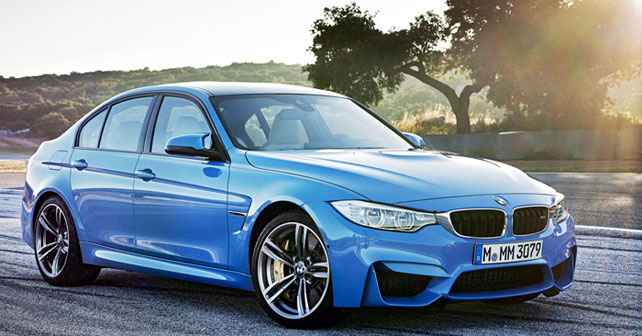
After much teasing, we finally get a look at the production versions of the M3 & M4. With their raw looks and promise of exemplary performance, the hot duo have much to offer
During the dying days of 2013, after much speculation, BMW finally revealed two of the most anticipated cars of last year – the production versions of its most popular M-division cars, the newly named M4 (a.k.a. the M3 coupe of old) and the M3 sedan. First things first, despite the new 4-series being an absolute looker, and the M4 being even more dynamic and aggressive, calling it the M4 just doesn’t sound right. The M3 was always an icon, and its renaming hasn’t gone down very well. Somehow, it just doesn’t have the same ring to it as the revered alphanumeric combination of ‘M3.’
But, enough of our rant about the name, the ultimate question is this – does the new M4 & M3 advance the hallowed M brand in the days of pumped up competition from the likes of AMG and Audi’s RS division? And, at least on first glance – at both the looks and the spec sheet – it seems as though the new M range is very capable of giving its rivals a bloody nose. For starters, there’s the new engine, which, after the last-gen V8 powerplant, reverts back to the classic BMW straight-six configuration. Boosted by two quick response, mono-scroll turbochargers, the 3 litre engine generates 425bhp – and in the process gains a small power boost of 11bhp over the 4 litre V8. But, as one would expect, the biggest gains come in the form of torque output, which, courtesy of the turbochargers, rises 40% to 550Nm – with peak torque being generated from 1,850-5,500rpm. So, don’t expect this to be a laggy, slow-to-respond turbocharged powerplant, as supplementing the turbos is direct fuel injection, variable valve timing, and continuously variable camshaft timing. This means the engine will rev faster, and at the same time provide instantaneous throttle response, while reducing claimed fuel consumption by up to 25% over the last-gen car.
Added to this is the weight loss. With the extensive use of CFRP (carbon-fibre-reinforced plastic) and aluminium in various chassis and body components, the new M4 weighs in at 1,497kgs – a good 80kgs less than the outgoing car. A big contributor to both the weight loss and lowering the centre of gravity is the standard-fit carbon fibre roof on both the two and four door versions. Naturally, this weight loss, along with the increased power and torque, means that the new cars are faster than their predecessors – clocking the 0-100km/h sprint in 4.1 seconds with the 7-speed DTC transmission. They also feature sharper handling, and, of course, are more efficient.
For all those who still love manual transmissions, all is not lost – yet. As against the general trend, the M3 & M4 will still be offered with the six-speed manual as standard – with the 7-speed dual-clutch transmission being an option. The manual now even offers automatic throttle blipping on downshifts, while being 12kgs lighter than the last unit. The seven-speed, on the other hand, features launch control as standard, and even offers what is referred to as a ‘Smoky Burnout’ mode believe it or not – to offer better burnouts for those into that sort of thing.
Other attractions of the new car include improved aerodynamics to aid the cooling of the engine, brakes and powertrain – especially when used on the track. Since BMW realises that a large share of their M cars are regularly used on track, they’ve developed an effective cooling solution to ensure that the turbochargers, engine, and transmission are always operating within range to deliver maximum performance under high stress conditions.
It goes without saying that with their dynamic looks, lofty power and performance figures, not to mention numerous technical innovations, the prospect of driving these M beasts is making us salivate already. We really can’t wait to get our hands on them!
TECH Highlights
TurboS
The turbochargers are mono-scroll for instant response and feature electric wastegate acutator for higher precision
Carbon Fibre Bootlid
A carbon fibre boot lid saves 5kgs, while the integrated gurney flap improves aerodynamic performance
Carbon Fibre Roof
A carbon fibre roof reduces the overall weight of the car, and also lowers the centre of gravity. Of course, the exposed carbon weave also looks pretty damn cool!
Carbon Fibre Roof
The driveshaft is a new one-piece carbon-fiber-reinforced plastic unit, which reduces weight by 40% - not to mention rotating masses as it doesn’t feature a bearing



























Write your Comment